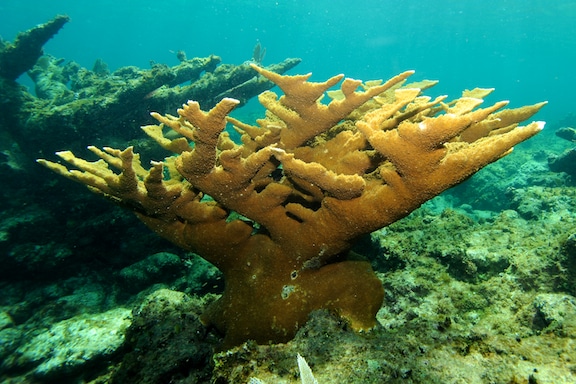Keys Marine Lab
Florida Spiny Lobsters were packed into almost every rock crevice in the waters behind Keys Marine Lab:
The most common corals I saw in this area were small colonies of:
 |
| Siderastrea siderea (left) and Siderastrea radians (right) |
and
 |
| Manicina areolata |
Mangrove Island
The mangrove island we visited was different than any of the other mangrove habitats I'd seen. Since it is surrounded by water, the current erodes the sediment under the mangrove roots creating a cave-like habitat of cooler water that's home to many mangrove snapper.
 |
| (http://fl.biology.usgs.gov/posters/Coastal_Ecology/Mangrove_prop_root/graysnapper2.jpg) |
Seagrass Beds
We've encountered many seagrass beds during this trip but one of my favorites was a very shallow bed littered with small colonies of Porites porites along with Thalassia and various macroalgae.
Patch Reefs
Each patch reef we visited was a little different in terms of size and species composition. Most were dominated by gorgonians but differed in size of hard corals. Some patch reefs had small hard coral colonies while others had hard coral colonies measuring several feet wide. Fish composition was limited to relatively smaller species compared to Looe Key.
 |
| Diploria labyrinthiformes |
Looe Key Reef
The reef at Looe Key was the most diverse and rich of any other habitat in the Keys. All of the fishes we had seen in previous habitats were there as well as the larger fishes that were absent in the other habitats. Among them were sharks, tarpon, and goliath grouper. Coral composition was different as well. Much of the substrate on the reef was covered with large colonies of Palythoa in a reef that was once dominated by Acropora palmata and A.cervicornis - which we saw very rarely compared to everything else.
 |
| Acropora palmata |
 |
| Acropora cervicornis |


No comments:
Post a Comment